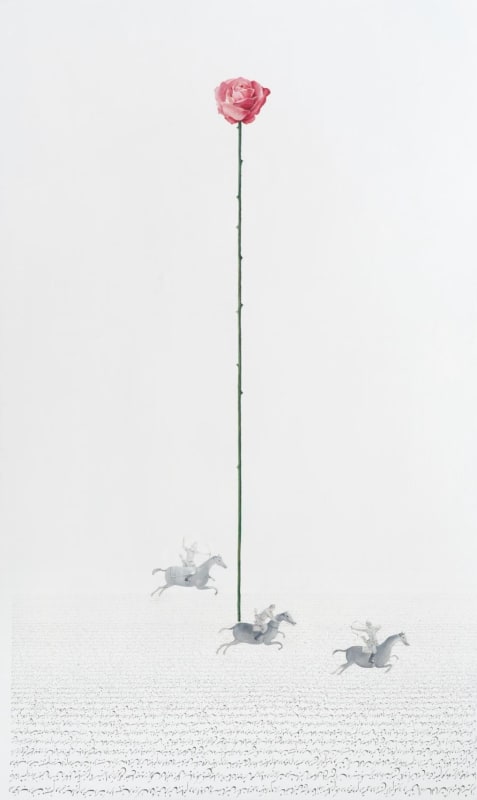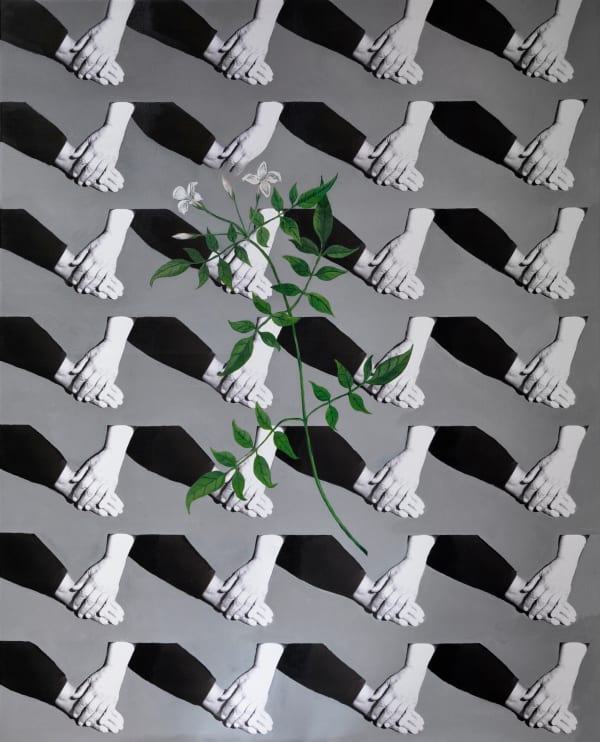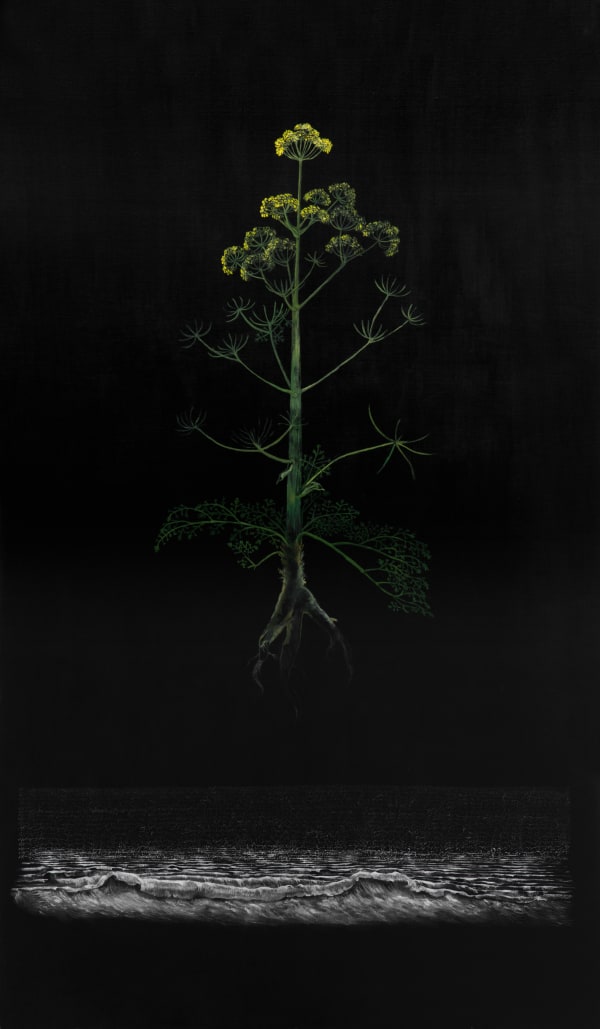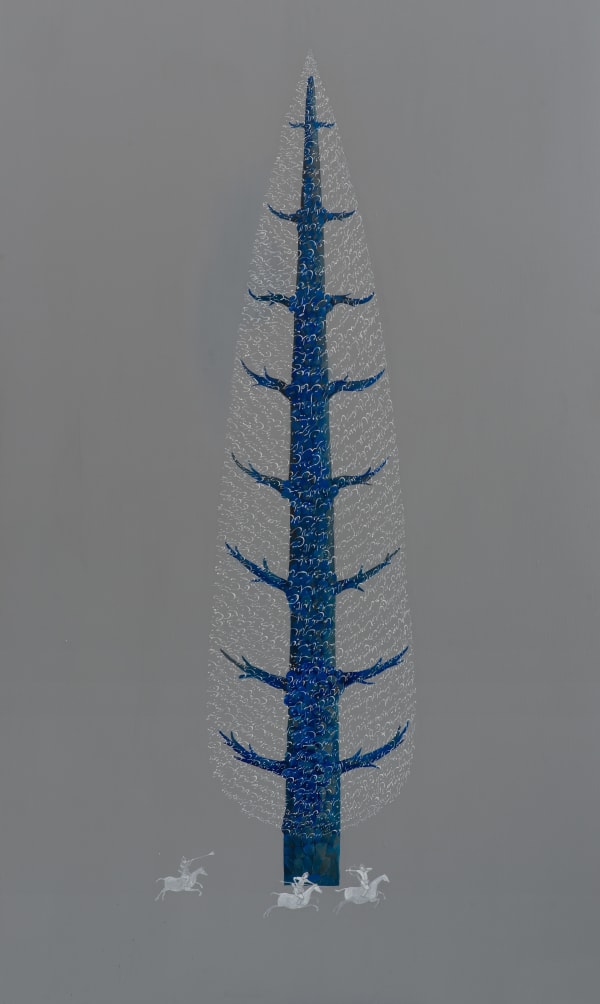Katayoun Rouhi Shiraz, b. 1965
Katâyoun Rouhi is a French painter of Iranian origin, born in Shiraz, Iran. She has lived and worked in France since 1985 and is currently based in Issy-les-Moulineaux. A graduate of the École des Beaux-Arts in Paris, where she studied painting in the studio of Pierre Carron, Rouhi’s early fascination with images and representation dates back to childhood. During road trips across Iran, she was captivated by the mural paintings covering roadside inns, vivid depictions of Persian mythology filled with legendary and religious heroes. Later, two artistic experiences shaped her path decisively: the screening of Abbas Kiarostami’s film The Traveler, and a performance of Maurice Béjart’s ballet Golestân on the ruins of Persepolis.
As a teenager, she took drawing lessons at the studio of painter Gholam Hossein Saber in Shiraz before moving to France to study art. Alongside her artistic practice, she developed a deep interest in the philosophy of art, completing academic research under the guidance of philosopher and poet Geneviève Clancy. In 2003, she earned a PhD in Aesthetics and Art Theory from the University of Paris 1 Panthéon-Sorbonne. Her thesis, The Ontology of Place – Journey to the Land of the “Non-Where”, was published in 2010.
Her practice, fully dedicated to painting, drawing, and poetry, has led Rouhi to participate in numerous exhibitions internationally, including Silsila at the Institut des Cultures de l’Islam (Paris, 2022), The Future of Traditions: Writing Pictures at SOAS Brunei Gallery, curated by Rose Issa (London, 2023), Unis sous un nuage at lilia ben salah Gallery (Paris, 2024), in Reminiscis at Galerie HCE (Saint-Denis, 2025) and 100 Women of Spirit at Zürcher Gallery (New York, 2025). Her work has been also featured in the 2025 Biennale d’Autun-Festival d’art sacré contemporain, at the Chapelle Saint-Aubin de l’ancienne Maîtrise. She is also featured in Rose Issa’s book Signs of Our Times: From Calligraphy to Calligraffiti (Merrell Publishers, 2016).
Her artistic practice questions the place of the human being through memory, nature, and time, guided by the aesthetic principle of the visible and the hidden, a fundamental concept in Iranian art.
-

Présences croisées – Crossed Presences
27 Jun - 6 Sep 2025In conjunction with an exceptional conversation marking the launch of the English version catalogue Arab Presences | Modern Art and Decolonisation – Paris 1908–1988 , published by Zamân Books in...Read more -

Unis sous un nuage
Group show 15 Oct 2024 - 5 Jan 2025For the exhibition 'Unis sous un nuage' (United under a cloud), four artists, from different backgrounds, confront their propositions in a shared reflection on movement, memory and transformation through a...Read more









